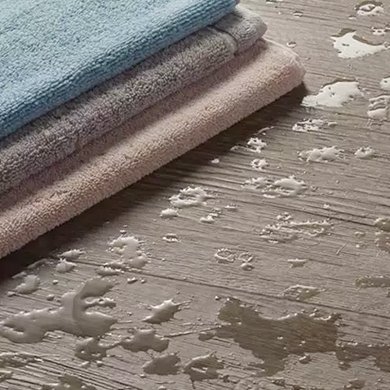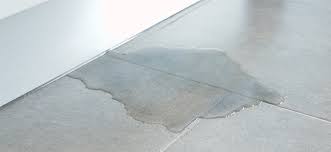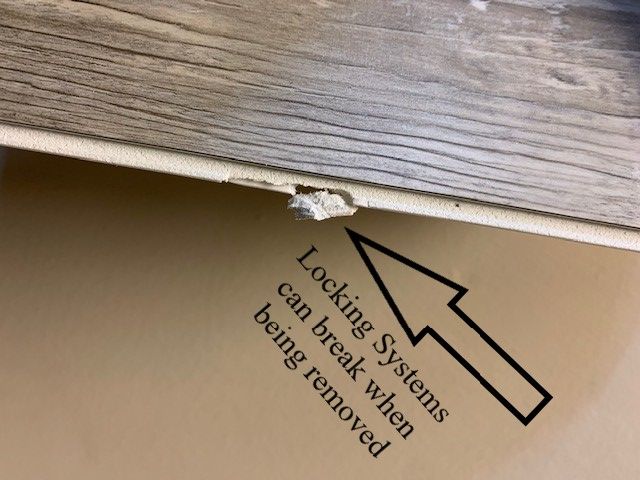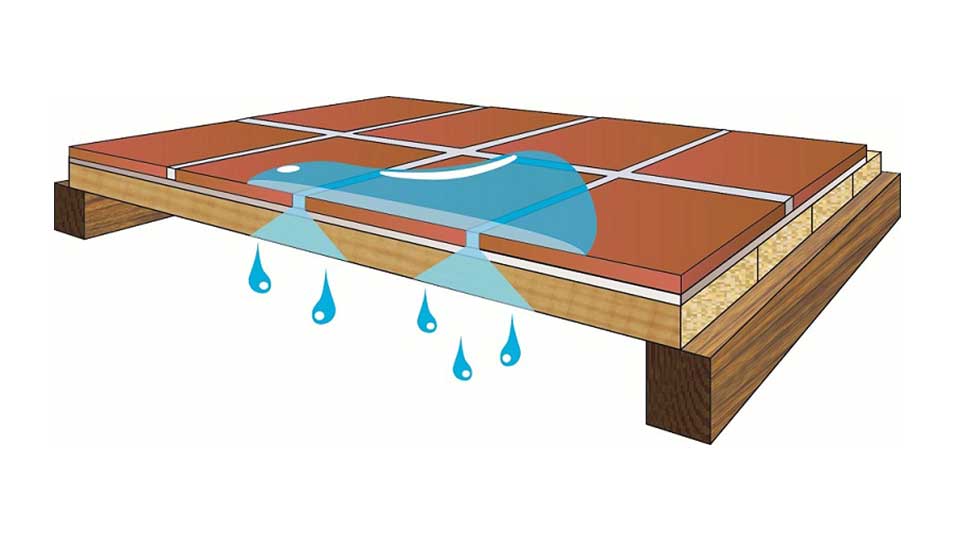Is It Really Waterproof?
Waterproof flooring. It's the hottest thing out there. Everybody wants it. Waterproof LVP. Waterproof laminate. Even waterproof wood. You will see in flooring showrooms all over America display with a piece of "waterproof" plank submerged in water for days, weeks, months.

But what are you really getting?
The uninstalled floor itself is waterproof. The locking systems on the floors are also "waterproof" but not for excessive amounts of water (more on this later). Think of a "waterproof" floor as being topically waterproof, for splashes and spills, pet accidents, wet mopping, typical everyday occurrences like this. Drop an ice cube, your floor will be OK.

But what if there's a lot of water? Waterproof is defined as being impervious to water, not allowing water to go through. And impervious is an even stronger word: not permitting penetration or passage; impenetrable, not capable of being damaged or harmed. A floor? Especially a wood floor? A laminate floor that is 80% wood? Really?
Roofs can leak. Swimming pools can leak. Showers can leak. All of these are made to constantly get wet. Floors are not.

A lot of water can and will get in, around, through, and under the flooring. The quicker you get the liquidup, the better. But if your house floods, the water will reach the perimeter and make its way under the floor. Subfloors, wood trim, walls, all will likely be damaged by excessive amounts of water either on or below the "waterproof" flooring.
 Water damage and mold cost the insurance industry $2.5 billion dollars per year, and the average cost of a home water damage insurance claim is over $7,000. The most common water damage issues are caused by plumbing and appliance issues, and less common are weather-related events such as rain, snow, or pipes burst due to freezing temperatures. Your "waterproof" floor is not going to help in situations like this. So please don't buy a floor thinking it is going to survive a water damage.
Water damage and mold cost the insurance industry $2.5 billion dollars per year, and the average cost of a home water damage insurance claim is over $7,000. The most common water damage issues are caused by plumbing and appliance issues, and less common are weather-related events such as rain, snow, or pipes burst due to freezing temperatures. Your "waterproof" floor is not going to help in situations like this. So please don't buy a floor thinking it is going to survive a water damage.
You may be thinking can't I just pull up the "waterproof" floor, dry everything out, and reinstall it. If it is a small area and you are super careful, probably. You must be very careful not to damage the tongues when removing the floor (otherwise you will have a hard time getting it back together) and you should number the planks, because it needs to be reinstalled like a puzzle. However, if there is a remediation company involved, their job is to get the floor up quickly and start drying everything out, because mold is an expensive word to an insurance company.
A remediation technician will not know that your floor could possibly be reused, and his focus is NOT going to be on saving your floor. When you have a flood, you are going to get a new floor. And probably a new subfloor, sheetrock repair, new trim, painting, sometimes a new ceiling and new furniture ... that's why we have homeowner's insurance.

To summarize, a floor is not impervious to water. Instead, think of your "waterproof" floor as having a surface that is resistant to small amounts of liquid that you clean up in a quick amount of time. You will avoid the disappointment of finding that something you thought would be covered by the flooring warranty is not.
How Much Does It Cost?
 Tile and stone are the tried-and-true waterproof floors. Installed and maintained properly, tile can be installed inside AND outside (porcelain and stone) and look great for decades. We are installing wood-look porcelain tile in the large basement of an Atlanta home. Yes, it is pricey. But we are replacing a high-end strand woven bamboo floor that was ruined by a leak. The cost is $16,500 for 1278 square feet of a top-of-the-line porcelain with upgraded stain resistant grout and pull up and disposal of the existing flooring. This is a floor that will be durable, easy to keep clean, and still be in use long after our client no longer lives in the home.
Tile and stone are the tried-and-true waterproof floors. Installed and maintained properly, tile can be installed inside AND outside (porcelain and stone) and look great for decades. We are installing wood-look porcelain tile in the large basement of an Atlanta home. Yes, it is pricey. But we are replacing a high-end strand woven bamboo floor that was ruined by a leak. The cost is $16,500 for 1278 square feet of a top-of-the-line porcelain with upgraded stain resistant grout and pull up and disposal of the existing flooring. This is a floor that will be durable, easy to keep clean, and still be in use long after our client no longer lives in the home.
Design Tip
The trend for rattan and cane furniture is still going strong into 2021 - coffee tables, chairs and bed headboards are all really easy ways to bring this stylish material into your home. Rattan is also super popular for your outdoor spaces - look for all weather wicker, aluminum or powder coated steel frames, or synthetic resins that will give you the look without the worry.

From Bob in Sandy Springs:
"Enhance installed carpeting and tile flooring which I purchased from them. They patiently assisted me in selecting the appropriate flooring, did an outstanding job of installation, and followed-up to ensure my total satisfaction. They were heads and shoulders above others in the business I've dealt with."
Thank you, Bob. You put a lot of thought into your product choices, and asked about all the pros AND cons of the floors you were considering. We always try to be very honest, even if it is not the answer a client wants to hear. Enjoy your new carpet and tile, and we look forward to helping you with your next project.
Appointments in the Design Center are recommended. Schedule your safe and private time to visit the showroom by giving us a call or using this link:

Very informative explanation on waterproof flooring. After having my garage makeovers done by Manmachine Automotive in India, I learned how critical proper flooring is for handling moisture and daily wear. Choosing the right materials truly makes long-term maintenance much easier.
ReplyDelete